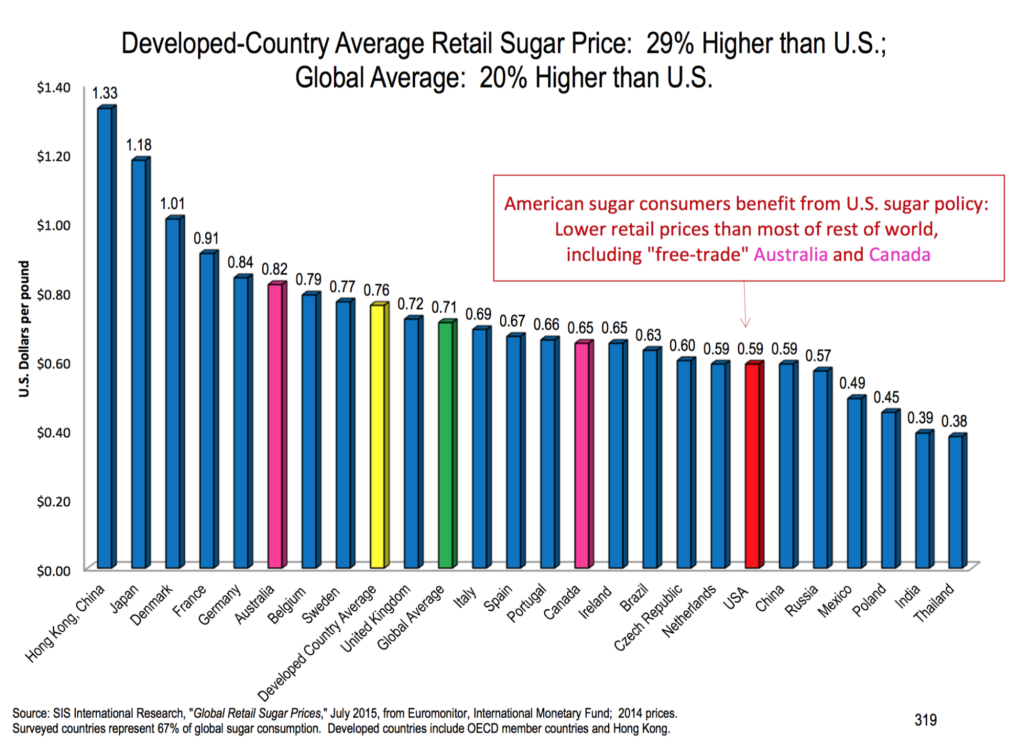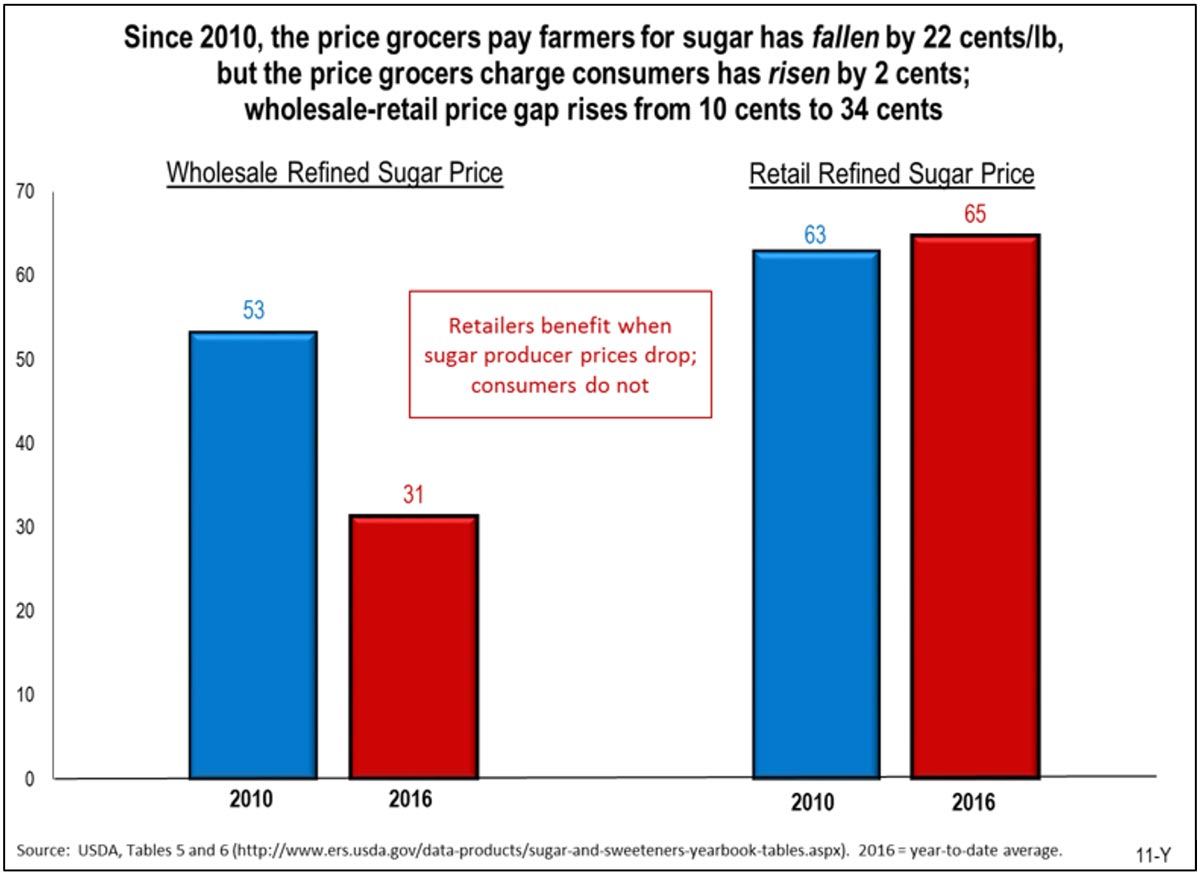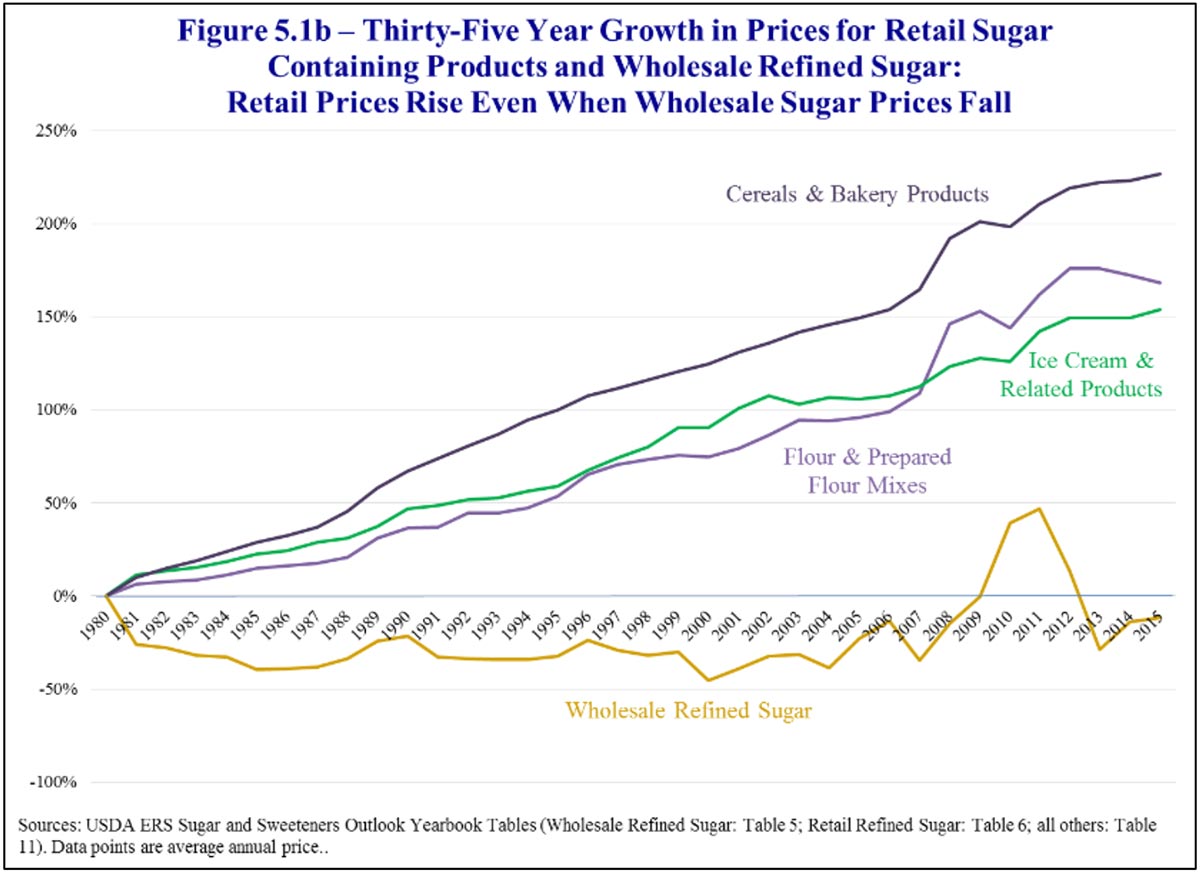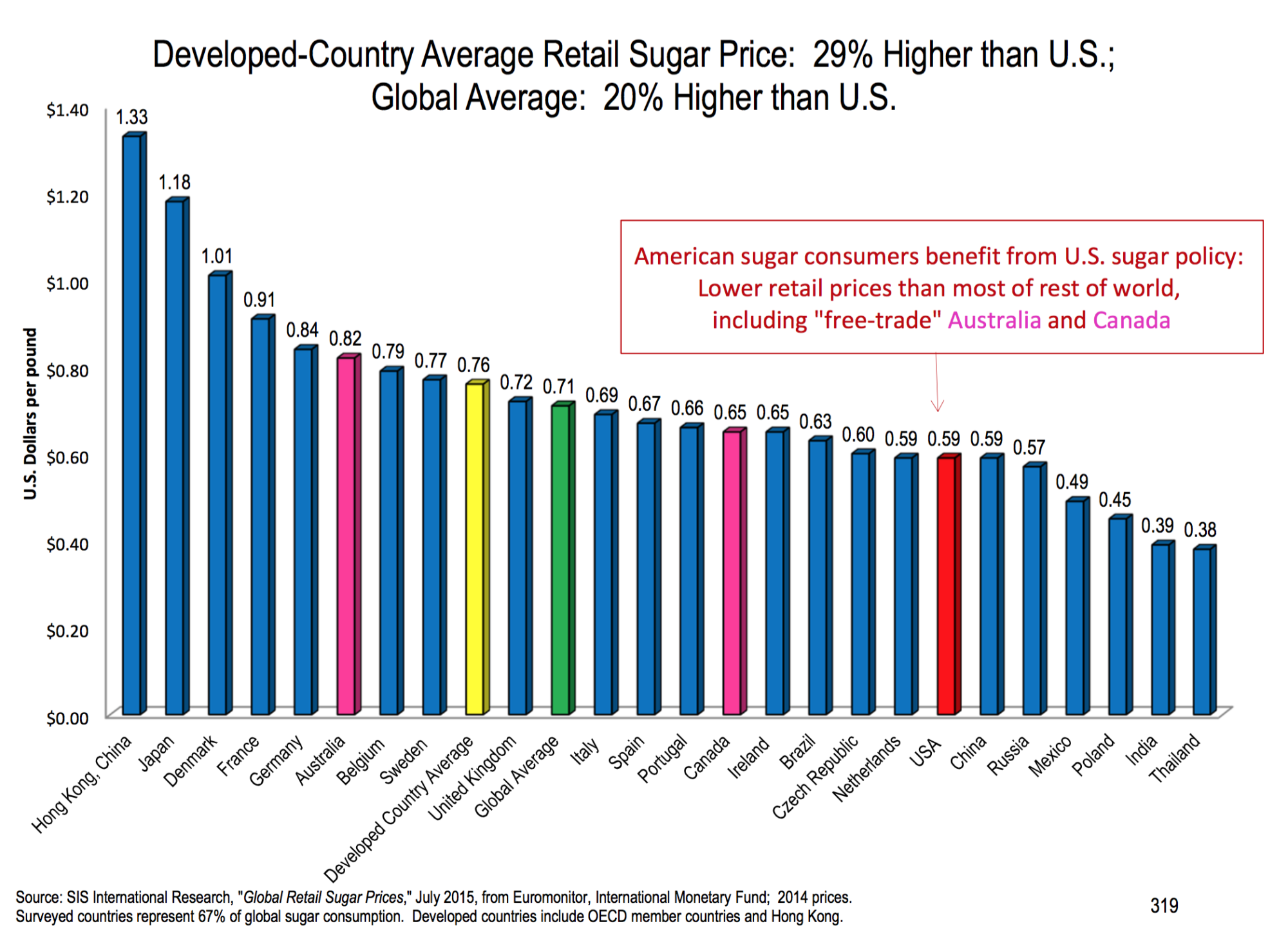Get the Facts on Sugar Costs
Recently, critics of national sugar policy have tried to sensationalize the cost of sugar to consumers and the cost of the American sugar program has been the subject of news stories, opinion columns, and editorials. When considering these issues, it’s important to have all of the facts.
Most importantly, American consumers pay nearly 30% less, not more, for sugar at the grocery than consumers in most other developed countries—including Australia and Canada who tout their “free trade” policies in sugar.
In some cases, critics have claimed that sugarcane farmers are receiving subsidies and that price supports are propping up the industry. These claims are false. Unlike growers of many other crops that traditionally received subsidy payments, sugarcane farmers do not receive direct subsidy checks from the federal government. The U.S. Department of Agriculture (USDA) sent out $5.2 billion of these checks in December of 2015 as prices cratered for other crops. Sugarcane growers are not included in these payments.
Comparatively, America’s sugarcane farming program is a bargain. In the recent Farm Bill passed by Congress, the sugarcane industry’s line item read $0 dollars. By law, sugar policy is supposed to be operated at no-cost to the taxpayer. A recent estimate from the USDA projects the no-cost of the sugar program to continue through 2026.
It’s worth noting that the United States has a sugarcane policy because of foreign government intervention and subsidies in their own sugar markets. Mexico was found to be illegally dumping sugar into the U.S. (interestingly, the Mexican government owns 20% of their sugar industry). Brazil’s government is spending about $2.5 Billion per year to control half of the “world” sugar market that you mention. That is how Brazil, one of the largest sugar exporters, holds the price of world sugar down and puts other countries out of the sugar business. Brazil and Mexico both have currencies that have devalued against the dollar further allowing them an advantage over any country that sells it sugar in U.S. dollars.
What Goes Up Doesn’t Always Come Down
The price that U.S. grocery stores pay for sugar peaked in 2010 after shortages hit the global market and needed imports were difficult to attract. As a result, grocery stores charged shoppers more for bagged sugar at the checkout line in order to maintain their profit margins.
But market conditions quickly changed. Foreign exporters increased production with the aid of subsidies, turning shortages into surpluses, and prices on the world and U.S. sugar markets fell rapidly. However, the price that shoppers pay didn’t follow suit. Instead, while sugar remained a great bargain compared to most other grocery items, it’s price continued to climb.
It’s important to remember that bagged sugar equals a pure profit opportunity for grocery stores. U.S. sugar producers make the sugar, bag the sugar, store the sugar until buyers request it, and ship the sugar as part of the price they receive. Grocers, in turn, apply a new price tag to the product and pocket the difference between the wholesale and retail prices.
That’s why retail sugar prices rarely retreat. To do so would require grocers to voluntarily lower their profit potential. Of course, grocery stores aren’t the only ones enjoying this sweet set-up. Food manufacturers, too, steadily increase the price of sugar-containing products regardless of what’s occurring with wholesale sugar prices.
Check out this chart from a recent paper by Dr. Alexander Triantis, the dean of the University of Maryland’s business school.
He also made an excellent point about how inconsequential the price of sugar is to the financial wellbeing of candy makers and other food manufacturers.
“Public data provided by the National Confectioners Association on their website in 2013 indicated that for every $1 of confectionery product sold in 2010, only about 4 cents is attributable to the cost of sugar, another 9 cents is due to other commodity costs, and the remaining 87 cents covers other costs as well as the companies’ profit margins,” he explained.
And those figures were from 2010, when sugar prices were much higher than they are today, and candy bars didn’t cost as much.
Makes you wonder what all the fuss is about as opponents of sugar policy complain on Capitol Hill and say U.S. sugar policy is harming grocery shoppers. Looks like grocery store profits have more of an impact on a shopping bill than the cost of sugar or sugar policy.
Grocers and food makers are doing quite well under the current arrangement and have widened sugar-related profits since 2010 because they refuse to share any of their sugar savings with consumers. This proves that most likely any savings realized by cheaper imported subsidized sugar would most likely be pocketed by the grocer or food maker—not passed along to the consumer. Meanwhile, the policy that is keeping sugar jobs in America and ensuring that we aren’t 100 percent dependent on subsidized imports continues to operate at no cost to U.S. taxpayers.
(Content courtesy of the American Sugar Alliance)









